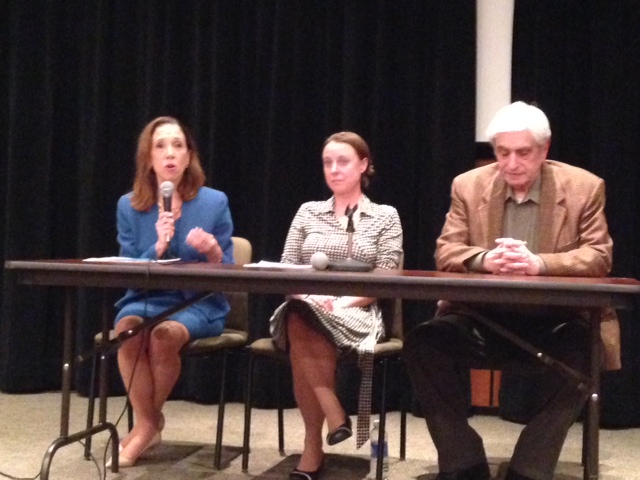Pleasantville Waits for Answers From DOT on Stone Wall Dilemma
Pleasantville officials are still waiting to learn from the state Department of Transportation (DOT) if a 800-foot-long stone wall must be moved 10 feet, which could significantly impact Benchmark Senior Living’s proposed assisted living facility.
Village Administrator Patricia Dwyer said the agency’s engineer who sent out an eleventh-hour email regarding the issue shortly before the board’s March 31 meeting was expected to return to his office on Wednesday and hopes to hear from DOT shortly.
The board was expected to vote on Benchmark’s request for a zoning change from half-acre residential to a floating zone last week to accommodate the eldercare facility at the 3.9-acre parcel on Route 117, a state thoroughfare. However, the surprise correspondence arrived about two hours before the start of the meeting. The wall is in the state right of way and has been maintained by the state for years.
Mayor Peter Scherer said there is a possibility that DOT brass may conclude that the concerns raised by its engineer, Stuart Sprague, does not require any action.
“It may very well be at management level at DOT this issue turns out not to be a problem,” Scherer said last Friday. “Our sense at the moment is what happened (last) Monday is that they raised this issue that had not been raised before.”
Scherer said he surmises that since there is a major development project that has been proposed, DOT may be looking to have another party maintain the wall.
If DOT forces Benchmark to move the wall 10 feet back onto its property, it would likely result in the reopening of the state Environmental Quality Review Act (SEQRA) process and additional public hearings, the mayor said. If that is not required, the soonest the board would be able to take a vote is Apr. 28, its next regular meeting.
Trustee Colleen Griffin Wagner said if the wall must be pushed back that would likely have a significant impact on the project because of the property’s topography.
“If you have to move a wall 10 feet back–now I’m not an engineer and I can’t speak to what kind of changes it makes to the grade and the drainage and all that–but it has to have an impact,” Wagner said. “So they (Benchmark) would have to go back to their drawing board and then start this process over again.”
The Jan. 7 email from Sprague, forwarded to Dwyer for the first time at 5:12 p.m. last Monday, alerted DOT personnel that the stone wall could present a safety issue at the site.
“There is minimal room from the curb to the wall, thus no room for snow storage (motorist safety) and no room for the pedestrian safety of a sidewalk,” part of Sprague’s correspondence read.
Later on, the email stated “(t)he Residency’s concern is that the existing (long time) stone wall is improperly within the State right of way and should be moved onto private property during construction of this new facility.”
Sprague also noted in his email that the municipality does not want the wall removed.
Calls placed on Monday to DOT’s regional office in Poughkeepsie and to Benchmark attorney David Steinmetz to ask questions regarding the issue were not returned.
However, last week’s email thread obtained by The Examiner also revealed that Steinmetz was taken by surprise.
“Neither Benchmark nor its consultants has ever received any written communication from DOT regarding the retaining wall,” Steinmetz wrote on his way to the March 31 meeting.
The board granted his request for adjournment until the applicant’s representatives could clarify the issue with DOT.
Scherer said all parties were aware of the wall but for the past year since the application was submitted its placement had not been an issue.
“Everybody knew the wall was on state property and we have all hoped that the state would own up to what we see as its responsibility, that it’s their wall and should anything happen to it they fix it,” Scherer said.
He noted that there is precedent for the state to take care of the road “curb to curb” and assign responsibility to private property owners or a municipality. However, the wall, believed to be built by the county in the 1920s and taken over by the state when Route 117 because a state road, has been maintained by those two entities since it was constructed, Scherer said.

Martin has more than 30 years experience covering local news in Westchester and Putnam counties, including a frequent focus on zoning and planning issues. He has been editor-in-chief of The Examiner since its inception in 2007. Read more from Martin’s editor-author bio here. Read Martin’s archived work here: https://www.theexaminernews.com/author/martin-wilbur2007/

